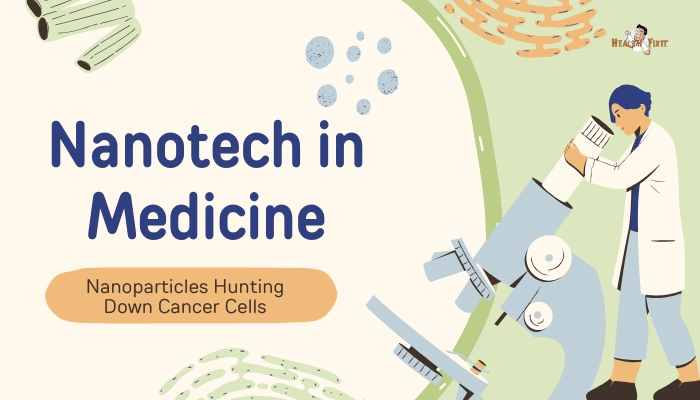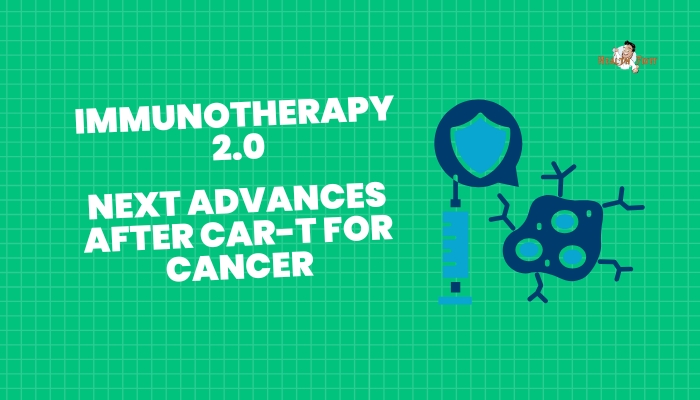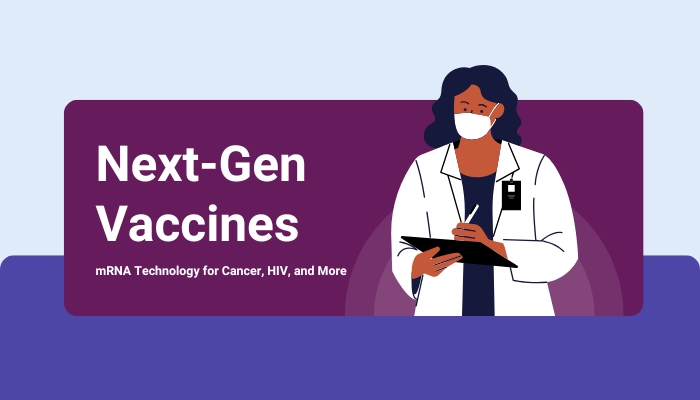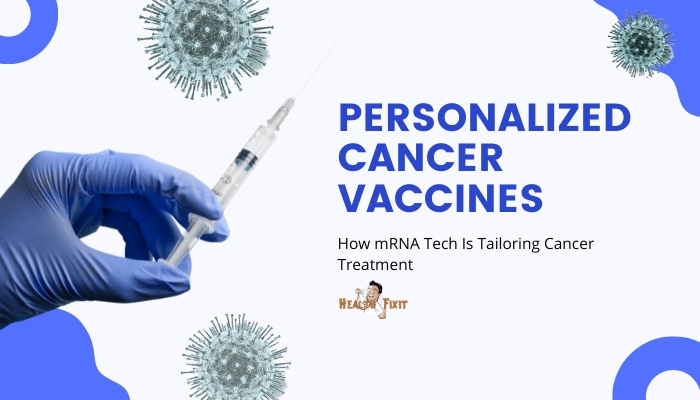Introduction
One of the biggest challenges in oncology is delivering potent anti-cancer drugs directly to tumor cells while sparing healthy tissues
. Nanotechnology offers an innovative solution. By engineering nanoparticles that selectively bind to cancer cells or release therapeutic agents under specific conditions,
scientists can enhance treatment precision. This approach not only minimizes side effects but also boosts the drugs’ effectiveness.
This article explores how nanoparticles hunt down cancer cells, the current state of nanomedicine, and future directions in targeted therapy.
Nanoparticles: Tiny Tools for Big Tasks
What Are Nanoparticles?
Nanoparticles are ultrafine particles, typically ranging from 1 to 100 nanometers in size—too small for the naked eye but large enough to encapsulate or attach therapeutic molecules. Common types include:
- Liposomes: Spherical vesicles formed by lipid bilayers, able to carry hydrophilic drugs in their interior or lipophilic drugs within the bilayer.
- Polymeric Nanoparticles: Formed from biodegradable polymers (e.g., PLGA), delivering drugs steadily and safely.
- Metallic Nanoparticles: Gold or iron oxide nanoshells can serve for imaging or hyperthermia treatments by converting certain energy (infrared, magnetic fields) into heat.
- Carbon-Based Structures: Fullerenes or nanotubes offering high drug loading and unique physical properties.
Key Advantages
- Targeted Drug Delivery: Nanoparticles can be functionalized with ligands (antibodies, peptides) that recognize specific tumor receptors, ensuring precise accumulation in cancer cells.
- Enhanced Permeability and Retention (EPR): Tumors often have leaky vasculature, allowing nanoparticles to penetrate more readily than standard drugs—improving drug concentration in tumors over healthy tissues.
- Controlled Release: Smart nanoparticles respond to triggers like pH changes or external stimuli (heat, light), enabling on-demand drug release at the tumor site.
How Nanoparticles Target Cancer Cells
Active Targeting
Researchers attach targeting moieties—like antibodies against tumor antigens (e.g., HER2 in breast cancer) or aptamers—directly to the nanoparticle surface.
The nanoparticle then binds specifically to those markers expressed on cancer cells, allowing the drug payload to be internalized.
Passive Targeting via EPR
Even without specific ligands, nanoparticles can exploit the enhanced permeability and retention effect: due to poorly organized tumor blood vessels and ineffective lymphatic drainage,
nanoparticles accumulate in tumor tissue more than in normal tissues, passively elevating local drug concentration.
Stimuli-Responsive Systems
Some nanoparticles remain stable in normal tissue but degrade or release drugs under tumor conditions, such as:
- Acidic pH: Many tumors are more acidic, triggering drug release from pH-sensitive nanocarriers.
- Enzymes: Cancer cells overexpress certain proteases, cleaving specialized linkers in the nanoparticle design.
- Heat or Light: External application of heat (hyperthermia) or laser triggers nanoparticle drug release or local tumor cell killing.
Clinical Successes and Ongoing Trials
Liposomal Drugs
Doxil® (liposomal doxorubicin) was among the first nano-formulations approved for cancer, showing reduced cardiotoxicity compared to free doxorubicin. Liposomal formulations for other agents (like Liposomal irinotecan) followed, improving half-life and tumor uptake.
Nanoparticle Albumin–Bound Paclitaxel (nab-paclitaxel)
Marketed as Abraxane®, this formulation binds paclitaxel to albumin nanoparticles. It enhances paclitaxel’s solubility and tumor delivery, widely used for breast, lung, and pancreatic cancers.
Ongoing Research
Numerous clinical trials test novel nanocarriers with advanced targeting strategies. Some combine imaging agents (quantum dots, iron oxide) with therapeutic cargo, achieving real-time tumor visualization while delivering drugs—a concept known as theranostics.
Benefits and Challenges
Benefits
- Reduced Side Effects: More precise targeting means less damage to healthy organs.
- Improved Drug Solubility: Nanocarriers can handle poorly water-soluble drugs more effectively.
- Combination Therapies: Multiple drugs or a drug + imaging agent can be co-loaded, enabling synergy or real-time monitoring.
Challenges
- Complex Manufacturing: Producing consistent, stable nanoparticles at scale is demanding and costly.
- In Vivo Complexity: Clearance by the immune system, distribution, and potential off-target accumulation vary from patient to patient.
- Regulatory Path: Each new nanoparticle platform must be rigorously tested for safety, biocompatibility, and reproducibility.
- Tumor Heterogeneity: Not all tumors share the same molecular targets or vascular properties, so universal solutions are elusive.
Future Directions
Personalized Nanomedicine
Advanced imaging and molecular profiling can identify a patient’s tumor markers, guiding the choice of ligands or triggers for their nano-therapeutics. This customization ensures higher efficacy and minimal side effects.
Multi-Functional Platforms
Beyond single-drug delivery, multi-modal nanocarriers might offer combined immunotherapy, photothermal therapy (heating tumors with near-infrared lasers), or gene therapy in a single platform—amplifying treatment outcomes.
Regulatory Harmonization
As more nano-therapies mature, global agencies (FDA, EMA) work to standardize safety testing. Streamlined approvals might accelerate adoption while safeguarding patient well-being.
Practical Tips for Patients and Providers
- Inquire About Trials: If standard chemo fails or leads to severe toxicity, check for clinical trials involving nanomedicines.
- Discuss Efficacy and Safety: Not all nanoparticles are the same. Detailed data on outcomes, side effects, and selection criteria matter.
- Careful Monitoring: Nano-therapies may require specialized imaging or frequent blood tests to measure efficacy and toxicity.
- Explore Combined Therapies: Nanoparticles often complement conventional chemo or immunotherapy. Collaboration among oncologists, pharmacologists, and possibly radiation oncologists can yield best results.
Conclusion
Nanoparticles—capable of stealthily hunting down cancer cells—are reshaping modern oncology. By exploiting precise targeting
, triggered drug release, and synergy with existing treatments, nanotechnology helps address core limitations of traditional chemotherapy
systemic toxicity and drug resistance. While manufacturing complexities and tumor heterogeneity remain obstacles,
the current momentum in nanotech R&D signifies a bright future for patients, including more effective and personalized cancer therapies.
As this technology evolves, collaboration between researchers, industry, and regulatory bodies is crucial. If harnessed responsibly,
nanoparticles may well deliver on their promise, not only as potent “smart bombs” against tumors but as harbingers of a broader shift towards highly individualized, biologically smart treatment regimens. Ultimately,
they exemplify how advanced engineering and biology converge to give patients better weapons in the fight against cancer.
References
- Shi J, Kantoff PW, Wooster R, Farokhzad OC. Cancer nanomedicine: progress, challenges, and opportunities. Nat Rev Cancer. 2017;17(1):20–37.
- Bobo D, Robinson KJ, Islam J, Thurecht KJ, Corrie SR. Nanoparticle-based medicines: a review of FDA-approved materials and clinical trials to date. Pharm Res. 2016;33(10):2373–2387.
- Sumer B, Gao J. Theranostic nanomedicine for cancer. Nanomedicine (Lond). 2008;3(2):137–140.
- Hare JI, Lammers T, Ashford MB, Puri S, Storm G, Barry ST. Challenges and strategies in anticancer nanomedicine development: an industry perspective. Adv Drug Deliv Rev. 2017;108:25–38.
- Bertrand N, Wu J, Xu X, Kamaly N, Farokhzad OC. Cancer nanotechnology: the impact of passive and active targeting in the era of modern cancer biology. Adv Drug Deliv Rev. 2014;66:2–25.
- Anselmo AC, Mitragotri S. Nanoparticles in the clinic. Bioeng Transl Med. 2016;1(1):10–29.
- Rosenblum D, Joshi N, Tao W, Karp JM, Peer D. Progress and challenges towards targeted delivery of cancer therapeutics. Nat Commun. 2018;9(1):1410.
- Li X, Yu Y, Ji Q, et al. Responsive nanocarriers for targeted drug delivery in cancer therapy. Int J Nanomedicine. 2020;15:973–983.
- Kim BY, Rutka JT, Chan WC. Nanomedicine. N Engl J Med. 2010;363(25):2434–2443.
- Shi Y, van der Meel R, Chen X, Lammers T, Theek B. Strategies for improving delivery and efficacy of nanomedicines for cancer immunotherapy. Expert Opin Drug Deliv. 2021;18(5):505–522.






